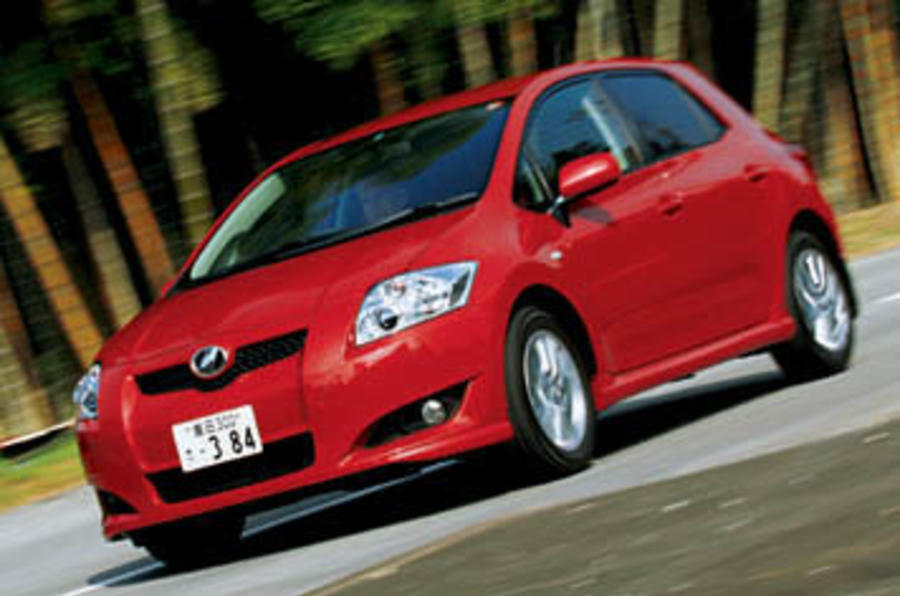What is it?
The new Toyota Corolla. Only, as you'll have noticed, it's now called the Auris. Considering just how successful the Corolla name has been, someone at Toyota must have taken a deep breath before deciding to change it.
But, says the company, the new name signals the extent of the differences between the old Corolla and its replacement. Underneath, the Auris is the same as the Japanese-market Corolla, the 10th generation of which has just gone on sale.
But for the Auris these mechanicals are covered by a European-designed skin that targets the Volkswagen Golf, Peugeot 307, Ford Focus and friends.
What's it like?
Pretty good, is the quick answer.
Not as wilfully radical as the latest Honda Civic, but more rounded, and certainly way more interesting than the car it replaces. The Auris has been benchmarked against the Golf Mk5, whose position in the premium hatchback firmament it covets.
The Toyota kicks off in Japan with a 1.5-litre engine or an all-new, eco-friendly 1.8, both engines linked to a continuously variable transmission. At this point things become tricky, because this isn’t the specification that will be available in Europe, but the 96bhp 1.4 and 122bhp 1.6-litre petrol four-cylinder engines that are headed for the UK from February next year may not be so different in the grand scheme of things.
The redesigned suspension will also remain unchanged for European markets, with MacPherson struts up front and a torsion beam rear axle. Inside, the most striking feature of the roomy and comfortable cabin is the wonderfully bold free-standing centre console.
This clever bit of design raises the gearlever up to what Toyota claims is the perfect height, leaving room for a small tray underneath for oddments. The handbrake has also been neatly integrated into this console. On Japanese roads, the Auris is none too shabby to drive. It steers very naturally with good feedback, grips well and shows impressive body control over bumps, dips and less-than-perfect surfaces.
It’s hard to catch it out. Turn-in is faithful and all-round stability is good. Sounds great, only it’s not hugely involving. The Civic is sharper and more fun to drive. Comfort is something else the Auris does well and the ride quality is relaxingly supple.
The brakes work well, too, with a strong, well modulated pedal action. For what it’s worth, the 1.5-litre base Japanese-market Auris is almost as quick and feels more agile than the new 1.8, despite the handicap of electric power steering.
Perhaps the same will apply for the European market’s base-model 1.4. The new 1797cc twin-cam developed for the Japanese market is free-revving, crisp and smooth in its power delivery. The UK-bound 1.6 should also have the same characteristics as it benefits from the same dual VVT-i variable valve timing used on the 1.8-litre model that we drove.
Three diesels will also be available (1.4, 2.0 and 2.2 D-4D) and transmissions will be a mixture of five-speed and six-speed manual ’boxes, with the MultiMode paddle-shift automatic available as an option. Fortunately the sluggish, whining CVT is not on the way.
Should I buy one?
The Auris is more than just a new name. This car is new from the ground up, and a significant step closer to class-leading European hatches such as the Golf and Focus. But we'll have to wait until we drive a UK-spec car on UK roads for a definitive verdict.











Add your comment